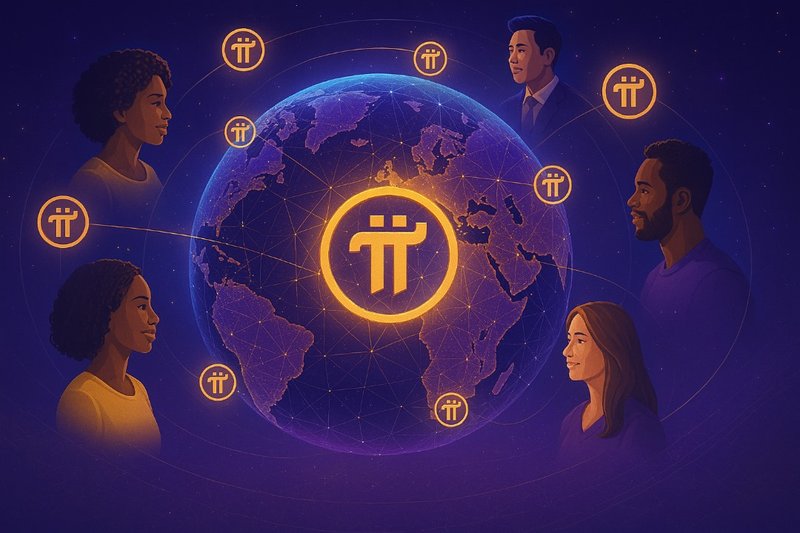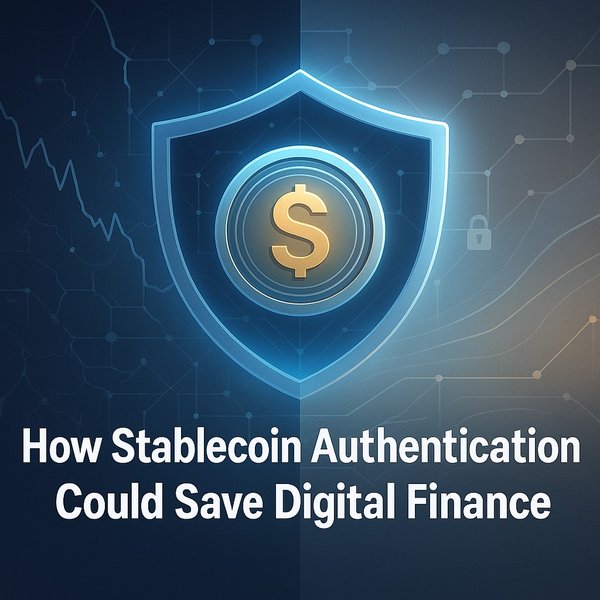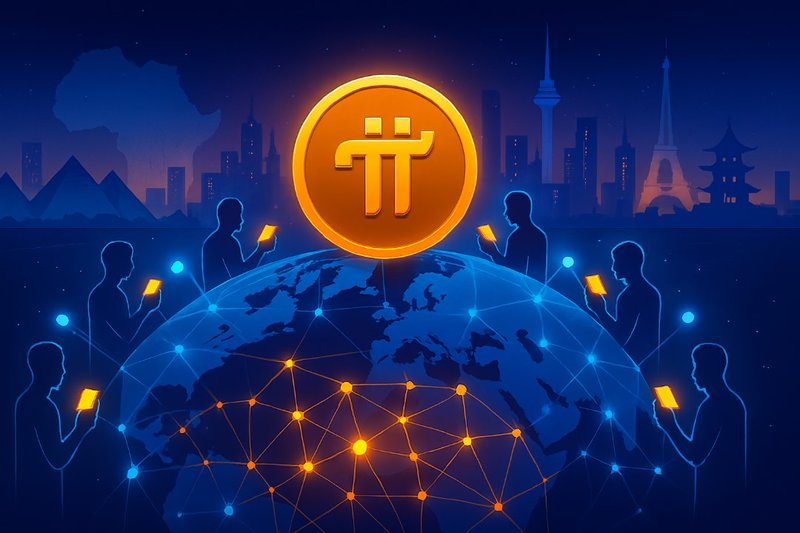Introduction
In the fast-changing world of digital finance and blockchain technology, few projects have attracted as much global attention as the Pi Network. Launched in 2019 with the vision of creating the world’s most inclusive digital currency, Pi set itself apart by allowing anyone with a smartphone to mine coins without expensive equipment or advanced technical knowledge. This simple but powerful idea drew in millions of people worldwide, from students and entrepreneurs to everyday mobile users looking for an accessible way into the cryptocurrency space.
Now, in 2025, Pi Network has moved far beyond its experimental stage. With the launch of its open mainnet, developer tools, domain naming system, and ecosystem fund, Pi is no longer just a digital currency—it has become a full ecosystem. This ecosystem includes decentralized applications (dApps), merchant solutions, digital identity systems, and even entertainment platforms such as blockchain-powered games. For Pioneers—the name given to Pi users—this represents both an exciting opportunity and a new responsibility: to understand how Pi works, where it is headed, and how to actively participate in shaping its future.
This article explores the Pi ecosystem in 2025, breaking down its most important features, challenges, and opportunities. It is designed for students, entrepreneurs, global developers, and anyone curious about Pi’s real-world impact. By the end, you will not only understand the current state of Pi but also see a clear roadmap of the way forward for Pioneers, whether you are looking to learn, build, invest, or simply use Pi in your daily life.
Understanding the Pi Network Ecosystem in 2025
The Pi Network has come a long way since its launch in 2019. What began as a bold experiment to make cryptocurrency accessible to anyone with a smartphone has now grown into one of the most talked-about digital ecosystems in the world. By 2025, Pi is no longer simply a coin you mine on your phone; it is a living ecosystem—a space where developers, entrepreneurs, students, and everyday users come together to build and use applications powered by Pi.
From Vision to Ecosystem
The story of Pi can be divided into phases. The first phase (2019–2021) was about community growth. Millions of people, called Pioneers, joined the project because they could mine Pi coins without expensive equipment. The second phase (2021–2023) focused on strengthening the foundation: identity verification through KYC, testnet trials, and community governance. The third phase, now in 2025, is where the ecosystem becomes tangible. This is the age of utility—where Pi coins and apps begin to have real-world use cases.
The Three Layers of the Pi Ecosystem
To understand the Pi ecosystem in 2025, it helps to imagine it as three interconnected layers:
- The Currency Layer – At the base lies the Pi coin itself. Millions of Pioneers have mined it over the years, and with the open mainnet now active, these coins can move securely across wallets and eventually into broader markets.
- The Application Layer – This is where innovation thrives. Developers use Pi App Studio and the Pi Browser to create decentralized applications (dApps) that operate within the ecosystem. These apps cover a wide range of needs—from marketplaces where you can spend Pi, to social platforms, educational hubs, and blockchain-powered games.
- The Utility Layer – Perhaps the most exciting part of Pi’s journey in 2025. Here, we see services like .pi domain names (digital addresses tied to Pi identity), merchant payment solutions, and initiatives like FruityPi, a game that shows how Pi can fuel entertainment and engagement. On top of this, funding mechanisms like the Pi Ventures Fund encourage entrepreneurs to build sustainable businesses within the network.
A Year of Milestones
2025 is proving to be a pivotal year for Pi. The Pi2Day event in June introduced major updates: synchronized KYC to simplify onboarding, domain name auctions to establish digital identity within the ecosystem, and even early steps into AI-powered tools. At the same time, the Pi Hackathon 2025 opened the door for developers worldwide to compete for prizes and recognition while building apps that bring new value to Pioneers. These developments are not isolated—they signal a shift from Pi being “something you hold” to something you use every day.
Why It Matters Globally
The Pi ecosystem matters because it breaks the usual barriers of blockchain. In many regions of the world, access to traditional finance remains difficult. Yet with Pi, a student in Ghana, an entrepreneur in India, or a developer in Brazil can all participate on equal terms. Unlike projects that stay limited to technical elites, Pi is built for inclusivity, accessibility, and real-world adoption.
For global readers in 2025, the message is clear: Pi is no longer just a coin on your phone—it is a growing digital economy where pioneers are not just spectators but active participants shaping the future of blockchain.
Key Developments Shaping Pi in 2025
The year 2025 has marked a turning point for the Pi Network, moving from promises to delivery. Several groundbreaking updates have transformed the ecosystem, providing new opportunities for developers, entrepreneurs, and everyday pioneers. These developments show that Pi is evolving from a “mining experiment” into a practical economy with global relevance.
Pi2Day 2025: The Big Leap
The annual Pi2Day celebration in June 2025 introduced some of the most important updates in the history of Pi Network. The highlight was the synchronized KYC system, which simplified identity verification for millions of Pioneers who had faced delays in the past. By streamlining onboarding, Pi finally bridged one of its biggest gaps—moving verified users to the open mainnet more efficiently.
Another headline update was the .pi domain system. These blockchain-based domain names allow Pioneers to create unique digital identities tied to their Pi wallets, businesses, or personal brands. Much like how “.com” domains shaped the internet era, .pi domains could become the digital real estate of the Pi economy, with auctions already attracting global interest.
The 2025 Pi Hackathon
To accelerate innovation, Pi launched its most ambitious Hackathon yet in 2025, with a prize pool valued at over 160,000 Pi. The event invited developers worldwide to create apps and tools that expand the ecosystem’s utility. For students and startups, the Hackathon is more than just a competition—it is a chance to secure funding, gain visibility, and showcase how Pi can solve real-world problems.
By emphasizing themes like financial inclusion, education, and digital commerce, the Hackathon reflects Pi’s mission to be more than a cryptocurrency—it aims to be a platform where ideas become businesses.
.pi Domains and the Naming Economy
The launch of .pi domain names opened up an entirely new economy inside the network. Just as the early internet saw a rush for domain names like “business.com,” Pi pioneers are securing digital addresses that may define their identity or brand within the ecosystem. A naming economy is emerging where ownership of a simple, memorable domain could mean influence, visibility, and even business opportunities within Pi’s expanding digital world.
FruityPi and the App Ecosystem
One of the clearest signs of Pi’s transition into utility is the growth of apps within the Pi Browser. The release of FruityPi, a blockchain-powered game, demonstrated how entertainment can drive user engagement while also showing the potential of decentralized applications (dApps) in everyday life.
Beyond games, the Pi App Studio has become the hub for developers to build and launch applications that range from marketplaces to social tools. With more than 7,900 dApps registered by mid-2025, Pi is positioning itself as a fertile ground for innovation.
Pi Ventures Fund and Merchant Adoption
Recognizing that ideas need funding to scale, Pi introduced the Pi Ventures Fund to support entrepreneurs building within the ecosystem. This fund ensures that developers and startups can move from concept to reality, helping Pi evolve into a sustainable digital economy rather than a hobby project.
At the same time, merchant adoption continues to grow. Across different regions, businesses are beginning to accept Pi for goods and services, creating a bridge between the digital coin and real-world value. In developing regions, especially in parts of Africa, Asia, and Latin America, merchants see Pi as a tool for reaching new customers and reducing reliance on unstable local currencies.
Why These Developments Matter
Each of these 2025 updates serves a larger purpose:
- Pi2Day updates improved infrastructure (KYC, mainnet access).
- Hackathon boosted innovation and entrepreneurship.
- .pi domains gave pioneers digital identity and ownership.
- FruityPi and dApps proved Pi’s role in real applications.
- Ventures fund and merchants established pathways to real-world adoption.
Together, they signal Pi’s transformation from a promise into a working ecosystem. For Pioneers, the challenge is no longer “Will Pi become real?” but rather “How can I make the most of it?”
Challenges Facing the Pi Ecosystem in 2025
Even though Pi Network has made remarkable progress in 2025, the journey is far from over. Like every ambitious project in the Web3 and fintech space, Pi faces challenges that must be addressed before it can achieve full global adoption. These challenges are not weaknesses—they are natural growing pains of a rapidly expanding digital economy. Understanding them is essential for pioneers, entrepreneurs, and developers who want to thrive in the ecosystem.
1. The Road to Full KYC Completion
The biggest bottleneck remains identity verification (KYC). While Pi2Day 2025 introduced a synchronized system that simplified the process, millions of pioneers worldwide are still in the queue. Without KYC, users cannot migrate to the mainnet or access full utility, leaving a large portion of the community in “limbo.”
This delay creates frustration and raises questions about fairness, particularly in regions where internet access and digital literacy are limited. For Pi to grow into a truly inclusive global economy, KYC completion must accelerate, possibly through partnerships with governments, NGOs, or new AI-powered verification tools.
2. Balancing Scalability with Security
Pi has now reached over 40 million engaged pioneers, making scalability a pressing challenge. Every new feature—whether .pi domains, dApps, or merchant tools—adds to the strain on infrastructure. Ensuring that transactions remain fast, secure, and low-cost is critical.
Unlike traditional blockchains where speed sometimes comes at the expense of decentralization, Pi must balance user growth with network stability. Any slowdown or security breach could reduce trust, especially among businesses and developers considering Pi adoption.
3. Limited Real-World Liquidity
While merchants are increasingly accepting Pi, the coin is not yet widely liquid outside the ecosystem. Unlike Bitcoin or Ethereum, Pi has not fully entered external exchanges in most regions due to its enclosed mainnet phase.
This strategy protects the coin from speculation, but it also limits the ability of pioneers to convert Pi into fiat currency. Without liquidity, skeptics question whether Pi is “real money.” The challenge for 2025 and beyond is to carefully manage exchange listings while preserving Pi’s vision of building an ecosystem first, speculation second.
4. Regulatory Uncertainty
Around the world, governments are still shaping their stance on cryptocurrencies. In some countries, digital assets are embraced as innovation; in others, they face restrictions or outright bans. Pi must navigate this complex environment carefully.
For pioneers, this means that adoption could vary region by region. In Africa and Asia, Pi is gaining ground as a tool for financial inclusion, while in parts of Europe and North America, regulatory approval will determine how easily businesses and institutions can integrate Pi. Clear communication with regulators and compliance frameworks will be essential for Pi’s long-term survival.
5. Ecosystem Maturity and Developer Incentives
While Pi’s app ecosystem is growing rapidly, not all dApps are delivering consistent value yet. Some are experimental, while others are still in development. The question remains: Which Pi apps will stand the test of time and become daily essentials?
For developers, incentives such as funding (through the Pi Ventures Fund) are crucial. However, without sustainable business models, dApps risk fading out. The challenge lies in ensuring that Pi’s app ecosystem becomes as indispensable as today’s mobile app stores.
6. Community Patience and Perception
Pi is unique because it relies on its community not just for growth, but also for trust. Yet, after years of waiting, some pioneers feel discouraged, especially those who expected instant liquidity or profits. Critics label Pi as “too slow” or even “unreal.”
Managing expectations and educating pioneers about Pi’s long-term vision is one of the ecosystem’s hardest challenges. If pioneers lose faith, the network effect that makes Pi powerful could weaken. Strong communication, transparency, and success stories will be key to keeping the community engaged.
Why Overcoming These Challenges Matters
These hurdles may seem significant, but they are not insurmountable. In fact, overcoming them could cement Pi’s role as a pioneering force in Web3 adoption.
- Completing KYC means unlocking millions of active users.
- Achieving scalability means Pi can handle real-world financial traffic.
- Expanding liquidity means Pi becomes a true bridge between digital and traditional economies.
- Regulatory clarity ensures Pi’s place in the global financial system.
- A mature app ecosystem creates daily utility.
- Strong community trust ensures Pi thrives long-term.
In other words, the challenges are not signs of failure—they are milestones that will define Pi’s credibility and future success.
The Way Forward for Pioneers in 2025 and Beyond
As Pi Network transitions into its most important phase yet, the responsibility does not lie with the Core Team alone. The true success of Pi depends on its pioneers—the global community of users, developers, merchants, and advocates who give the ecosystem life. In 2025 and beyond, pioneers must not only hold Pi coins but also act as builders, ambassadors, and innovators, ensuring Pi grows into a sustainable digital economy.
1. Completing KYC and Mainnet Migration
For every pioneer, the first step is clear: finish KYC and migrate to the open mainnet. Without verification, coins remain locked and cannot participate in the wider economy. By completing KYC early, pioneers secure their place in the growing ecosystem and open the door to using Pi across apps, businesses, and global transactions.
Those who lag behind risk missing opportunities, especially as businesses begin rewarding verified pioneers with exclusive offers and services. Simply put: no KYC, no full participation.
2. Supporting and Using Pi Apps
The Pi ecosystem will thrive only if pioneers actively use and support Pi-powered applications. This means shopping with Pi where accepted, trying out dApps, and giving feedback to developers. Every transaction made in Pi, no matter how small, strengthens the network and signals real demand.
For entrepreneurs, this is also the time to build apps that solve real-world problems—from e-commerce to education, health, logistics, and entertainment. Developers who create lasting value now will be remembered as the early architects of the Pi digital economy.
3. Merchant Adoption and Business Integration
One of the most powerful ways to expand Pi’s utility is through merchant adoption. Businesses—whether small shops or global companies—stand to benefit by accepting Pi as payment. Not only does it expand their customer base, but it also places them at the forefront of financial innovation.
Pioneers can play a role here by encouraging local businesses to accept Pi, creating grassroots adoption. In regions with limited banking access, Pi could quickly become a trusted method of payment, creating local Pi economies.
4. Building Knowledge and Digital Skills
A currency is only as powerful as the people who understand how to use it. That’s why pioneers must focus on financial literacy, blockchain education, and digital skills. Learning how wallets, smart contracts, and decentralized apps work ensures that pioneers are not just passive holders but active participants in the digital economy.
Educational initiatives—whether local meetups, online workshops, or university partnerships—will prepare the next wave of pioneers to innovate with Pi, not just spend it.
5. Advocating for Trust and Regulation
As Pi interacts more with traditional finance, pioneers must also serve as advocates for trust and transparency. This includes promoting ethical use of Pi, supporting compliance efforts, and engaging regulators in constructive ways.
If pioneers present Pi as a responsible, community-driven project, governments and institutions are more likely to accept it. This creates long-term stability and safeguards Pi from being seen as a speculative bubble.
6. Patience, Vision, and Collective Growth
Perhaps the most important way forward is patience. Pi is not a get-rich-quick scheme; it is a long-term project designed to build a people-powered digital economy. Pioneers who stay committed, contribute to the ecosystem, and maintain trust will benefit the most as Pi matures.
The vision is bigger than just a currency—it’s about creating an inclusive financial system where value flows freely across borders, without exclusion or exploitation. Every pioneer, no matter their background, has a role in shaping this future.
The Call to Action for Pioneers
The way forward is clear:
- Verify through KYC.
- Migrate to the open mainnet.
- Use Pi in everyday life.
- Build apps and support developers.
- Encourage businesses to accept Pi.
- Stay patient and informed.
The next few years will define whether Pi becomes a true global currency or just another experiment. The difference will be made by pioneers—ordinary people doing extraordinary things together.
Perfect 👍 here’s the final conclusion and closing section, written all in one with strong wisdom, motivation, and global appeal to wrap up the Pi ecosystem blog.
Conclusion: The Dawn of a People-Powered Digital Economy
The journey of Pi Network has always been about more than just mining coins on a phone. It has been about proving that financial power can rest in the hands of ordinary people, not just governments, banks, or corporations. In 2025, Pi has reached a turning point where vision meets reality, and the question is no longer if Pi will matter, but how much each pioneer is willing to contribute to make it thrive.
The ecosystem is alive—.pi domains are being claimed, developers are launching innovative apps, merchants are beginning to accept Pi, and millions of pioneers are migrating to the open mainnet. Yet, the real success of Pi will not be measured by technology alone, but by how humans use it to create trust, opportunity, and equality in a world that often denies these values.
For pioneers, the message is clear:
- Do not wait for others to build the future—build it yourself.
- Do not hoard Pi in silence—use it to empower trade, knowledge, and connection.
- Do not think of Pi as someone else’s project—it is yours, it is ours, it is everyone’s.
The challenges ahead are real. Adoption will take time. Regulation will test patience. Skepticism will remain. But every great transformation in history has faced resistance before acceptance. The internet, mobile phones, and digital banking all seemed uncertain at first. Today, they are the backbone of society. Pi carries the same destiny—if its pioneers are bold enough to believe and act.
The story of Pi is not just about a coin. It is about the birth of a people-powered digital economy—a world where anyone, anywhere, can transact, build, and belong without barriers. Whether you are a student in Ghana, an entrepreneur in India, a developer in Brazil, or a merchant in Europe, Pi is your opportunity to leave a mark on history.
The future is not waiting for tomorrow—it is being written today. And pioneers are the authors.
So the call is simple yet profound: Be patient. Be active. Be visionary. Above all, be united. For when millions of pioneers move with one voice, one purpose, and one currency, no force on earth can stop Pi from rising.
The dawn is here. The choice is yours. The future belongs to those who believe in it—and Pi is proof that the future is already in our hands.
💬 Join the Conversation
The Pi Network story is still being written — and you, as a pioneer, are part of it.
- Do you believe Pi can truly become a global currency?
- What role do you think pioneers should play in building its ecosystem?
- If Pi reaches mass adoption, how would you personally use it in your daily life or business?
👉 Share your thoughts in the comments below. Your perspective could inspire another pioneer somewhere in the world.




Comments (0)
Leave a Comment
No comments yet. Be the first to comment!